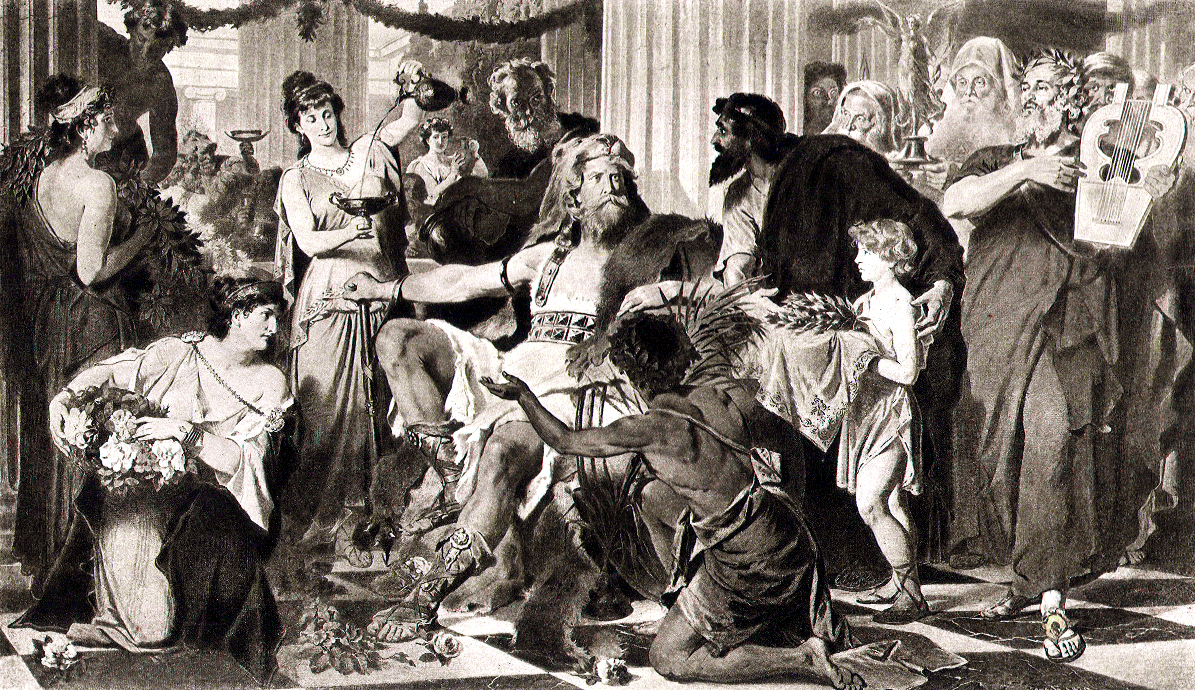After fleeing the Huns and crossing the Danube, the Visigoths came into direct contact with and influence of the Roman Empire, through the sanctuary provided by Emperor Valens. The Visigoths formed as a creation due to Hunnic attack and the need to survive in the face of Roman power and hostility. Though they became subjects to the Roman Empire, they were still semi-autonomous. Their freedom was not recognized, but except for certain military salaries and payment of taxes, they were allowed to develop their life as an organized group.
While the Visigoths had a ruling family when they lived by the Black Sea, no leader contained their control in the first shock of contact and subjection to the Roman Empire. Within the Empire, Gothic leaders failed to establish any king of dynastic control. During the period after crossing the Danube, the Visigoths went from detribalization to the formation of a permanent political structure within the empire. Being a migratory people urged by the need of being accepted, the Visigoths gradually adopted the customs of Rome. During this period of about 50 years, contact with Rome not only altered Visigothic political ideas or concepts of power but also altered society in its totality, making it more hierarchical. The Visigoths depended on Rome as a trading partner and for subsidies, and they also survived by becoming a part of the Roman military.
Clash of Visigoths and Romans
Various Visigothic individuals were successful as Roman generals. For some, this was an easy, stable way to make a living. Some were taken as children hostages and given a military upbringing. Others entered the military career with the aim of achieving maximum status and be seen as equals of the Roman aristocracy. They were hired as a substitute military force which could solve the lack of interest among Roman citizens in their own defense, which had been traditionally been their right and duty. By the end of the fourth century CE, half of the Roman officers were of barbarian origin.
Right: Visigoths crossing the Danube River
Depiction of Roman soldiers
Alaric I was a prime example of a Visigoth climbing through the Roman ranks for personal gain. He saw the army as a possibility of achieving a hero’s glory and fame that he could not have achieved working in the fields of Thrace. While he did not get the position he aspired to have, he did get gold, silver, clothes, provisions, legal shares of fiscal revenue as pay for military service, and rights of a Roman solider.
Left: Alaric I entering Athens
Athanaric was a military leader and main negotiator between the Romans and the Visigoths. Valens achieved peace with Theodosius I after the Gothic Wars, exchanging lands for the promise to obey the emperor as subjects. The Roman state had to tolerate Visigothic autonomy in the peace of 382 due to decisive Roman defeats in Adrianople and Macedonia because this made it impossible militarily to dismantle Visigothic autonomy in a similar way to normal Roman practice with immigrants. This served as a foreshadowing of the fall of the Rome.
Athanaric
While many Visigoths turned to the Roman military as a way of support and stability, not all Visigoths agreed with the posture of Romans and bound together as a unified group against the Roman state to preserve their autonomy. The Emperor’s long stay and influence in their territory unnerved them. The attachment of the Visigoths to Alaric I was a straightforwardly negative response to Roman power, and the same was true of the revolt which started Alaric’s career in 395. Alaric was more of a military chief and head of a seminomadic people than an administrator, and he made the spoils of invasions the source of prestige.
Left: Alaric's victory in Athens
In 395 and 396, the Visigoths, led by Alaric I, destroyed Argos, Corinth, and Sparta. After sacking these principal Grecian cities. Alaric led the Visigoths to Rome and besieged the Romans. As a ransom, the Romans paid 5,000 pounds of gold, 30,000 pounds of silver, 4,000 silken tunics, 3,000 hides dyed scarlet, and 3,000 pounds of pepper. Later in 410, Alaric I led and the Visigoths sacked Rome. Alaric I died shortly after this battle. The history of the Visigothic kingdom and of the Visigoths themselves is inseparably linked to the fall of the Roman Empire.
Right: Sack of Rome by the Visigoths









